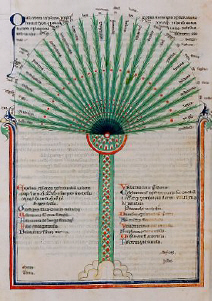23. The Motion which acts upon Sensible objects enters from without, and so shakes, drives, rouses and thrusts its participants that they may neither rest nor preserve their identity – and all to the end that they may be caught into that restlessness, that flustering excitability which is but an image of Life.
We must avoid identifying Motion with the objects moved: by walking we do not mean the feet but the activity springing from a potentiality in the feet. Since the potentiality is invisible, we see of necessity only the active feet – that is to say, not feet simply, as would be the case if they were at rest, but something besides feet, something invisible but indirectly seen as an accompaniment by the fact that we observe the feet to be in ever-changing positions and no longer at rest. We infer alteration, on the other hand, from the qualitative change in the thing altered.
Where, then, does Motion reside, when there is one thing that moves and another that passes from an inherent potentiality to actuality? In the mover? How then will the moved, the patient, participate in the motion? In the moved? Then why does not Motion remain in it, once having come? It would seem that Motion must neither be separated from the active principle nor allowed to reside in it; it must proceed from agent to patient without so inhering in the latter as to be severed from the former, passing from one to the other like a breath of wind.
Now, when the potentiality of Motion consists in an ability to walk, it may be imagined as thrusting a man forward and causing him to be continually adopting a different position; when it lies in the capacity to heat, it heats; when the potentiality takes hold of Matter and builds up the organism, we have growth; and when another potentiality demolishes the structure, the result is decay, that which has the potentiality of demolition experiencing the decay. Where the birth-giving principle is active, we find birth; where it is impotent and the power to destroy prevails, destruction takes place – not the destruction of what already exists, but that which intervenes upon the road to existence.
Health comes about in the same way – when the power which produces health is active and predominant; sickness is the result of the opposite power working in the opposite direction.
Thus, Motion is conditioned, not only by the objects in which it occurs, but also by its origins and its course, and it is a distinctive mark of Motion to be always qualified and to take its quality from the moved.
